Creating and Organising Chapters
Learn how to add, organise, and manage chapters in your Keepsake project. Set goals, track progress, and structure your storytelling.
Chapters are organisational tools, not rigid requirements. Add what resonates, skip what doesn't, and work in any order that feels natural.
Adding New Chapters
Navigate to Your Project
Go to your project's main page where you can see all existing chapters
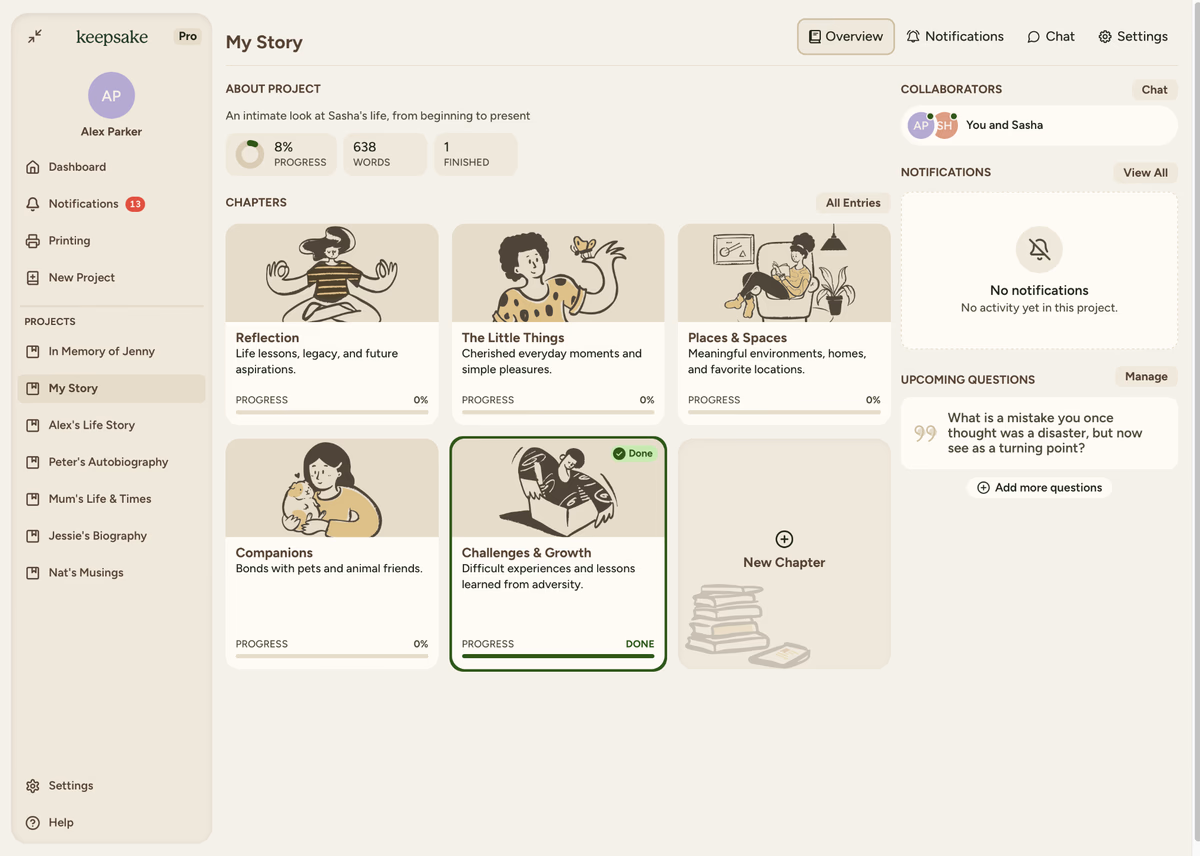
Click New Chapter
Look for the "New Chapter" card with a plus icon (it should be at the end of all the other chapters)
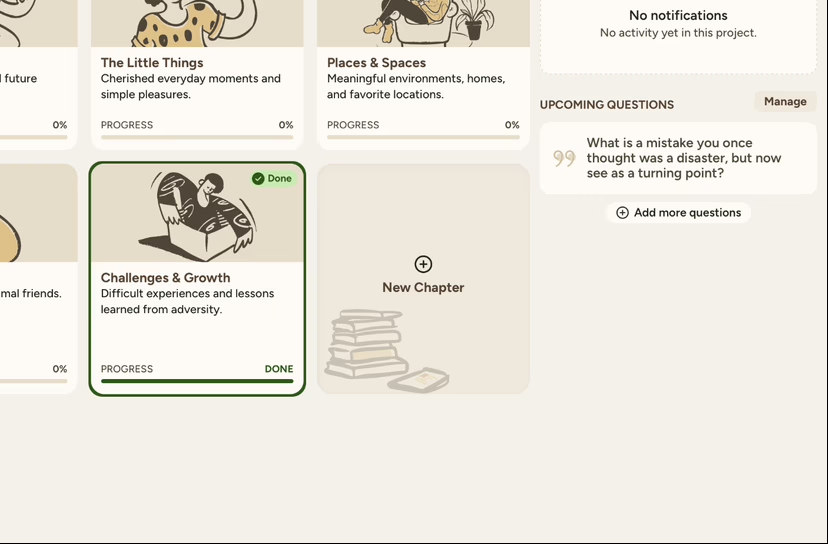
Browse Available Chapters
You'll see a gallery of chapter templates to choose from
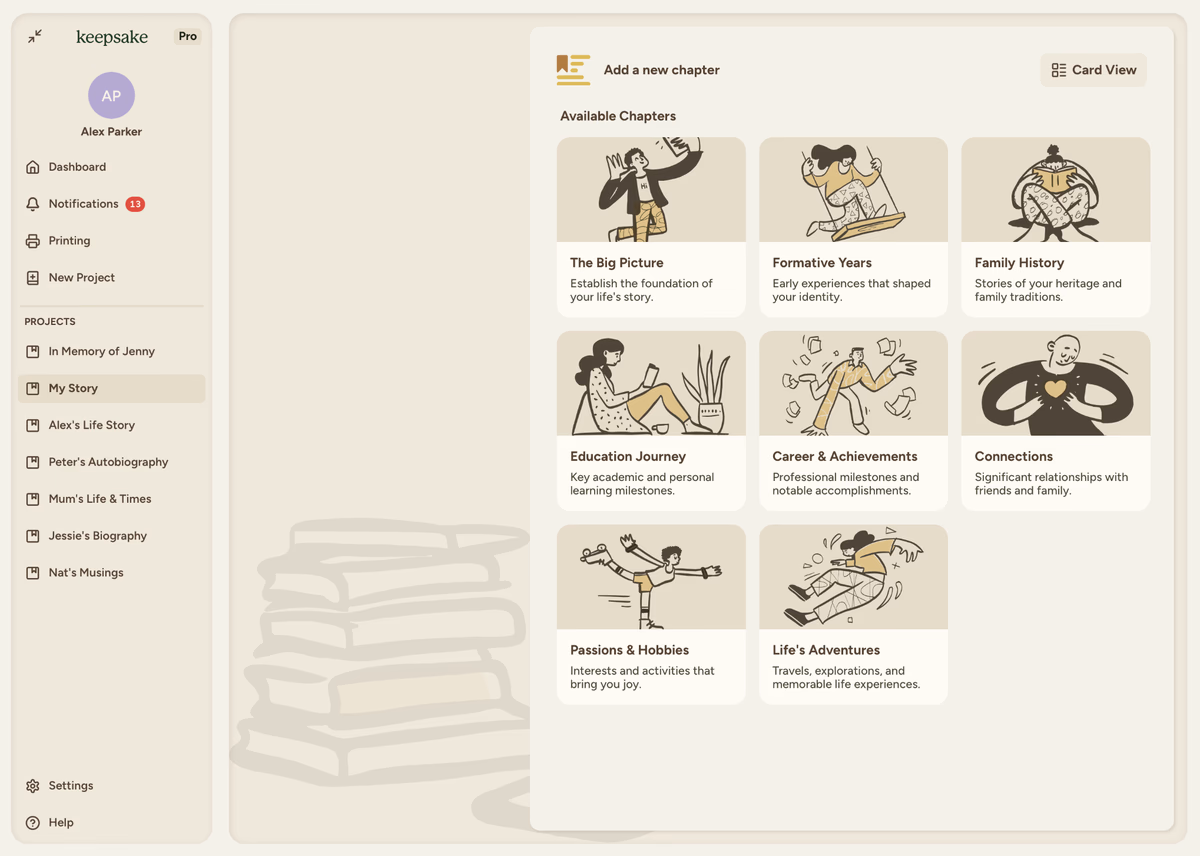
Select a chapter
Click on the chapter template you want to add
Review chapter details
See the description and purpose of the chapter
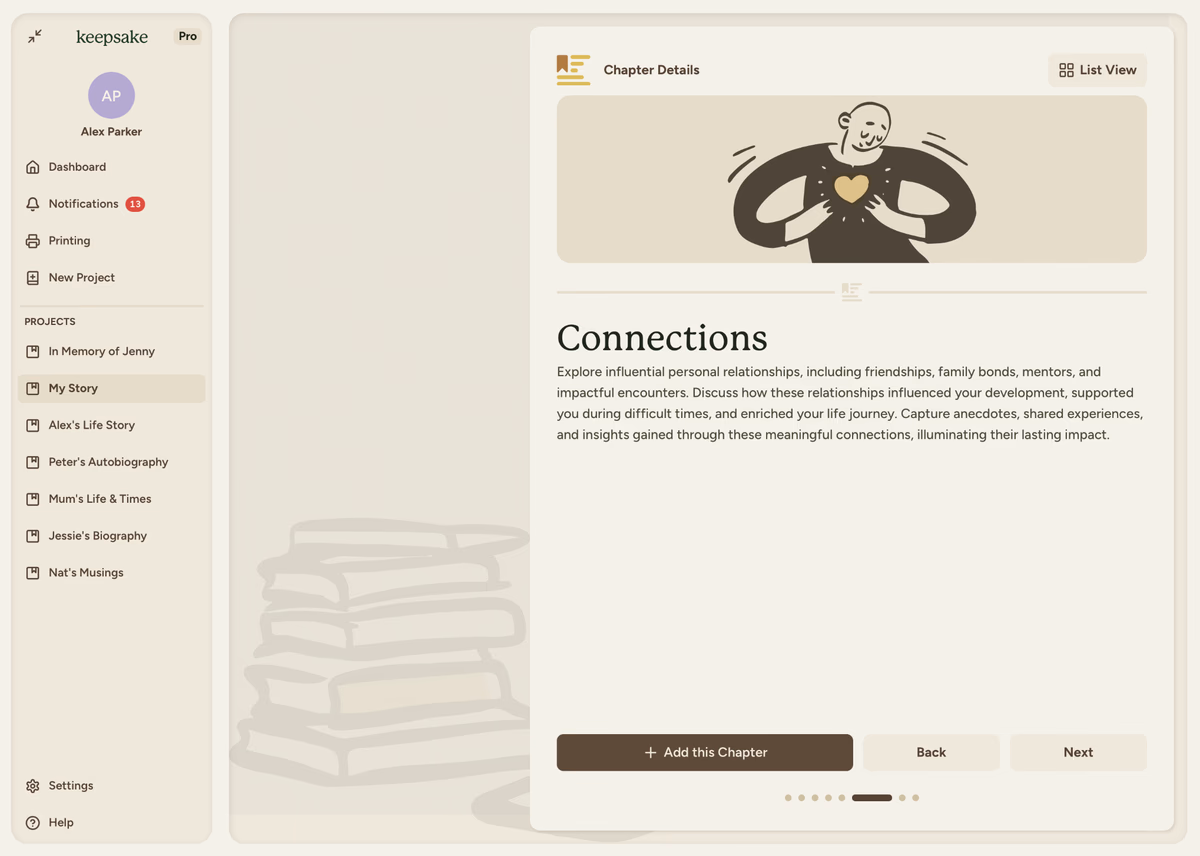
Click Add this Chapter
Confirm you want to add it to your project
Add Entries (Optional)
Select what entries you'd like to start with in your queue (you can always add these later)
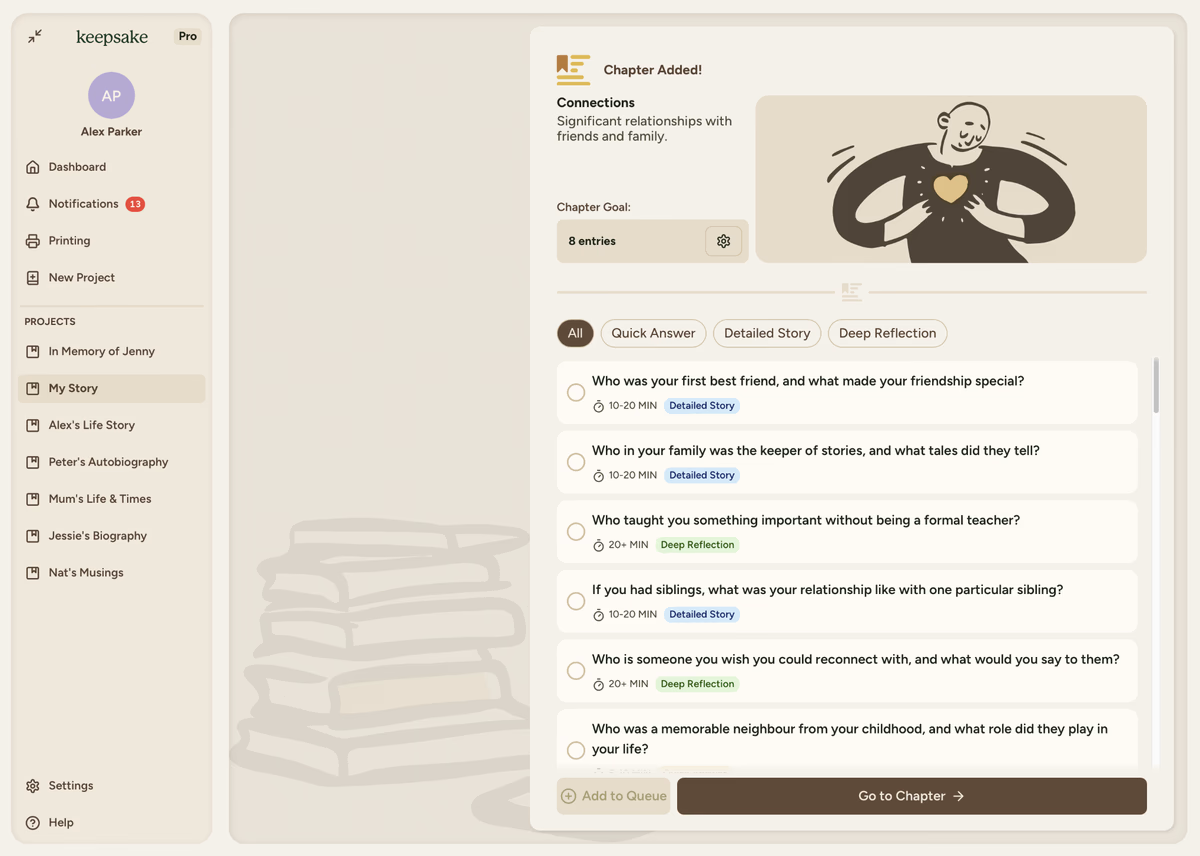
Select Chapter Goal (Optional)
Choose how many stories you'd like to complete to consider a chapter 'Done'. This is how we measure your progress with chapters.
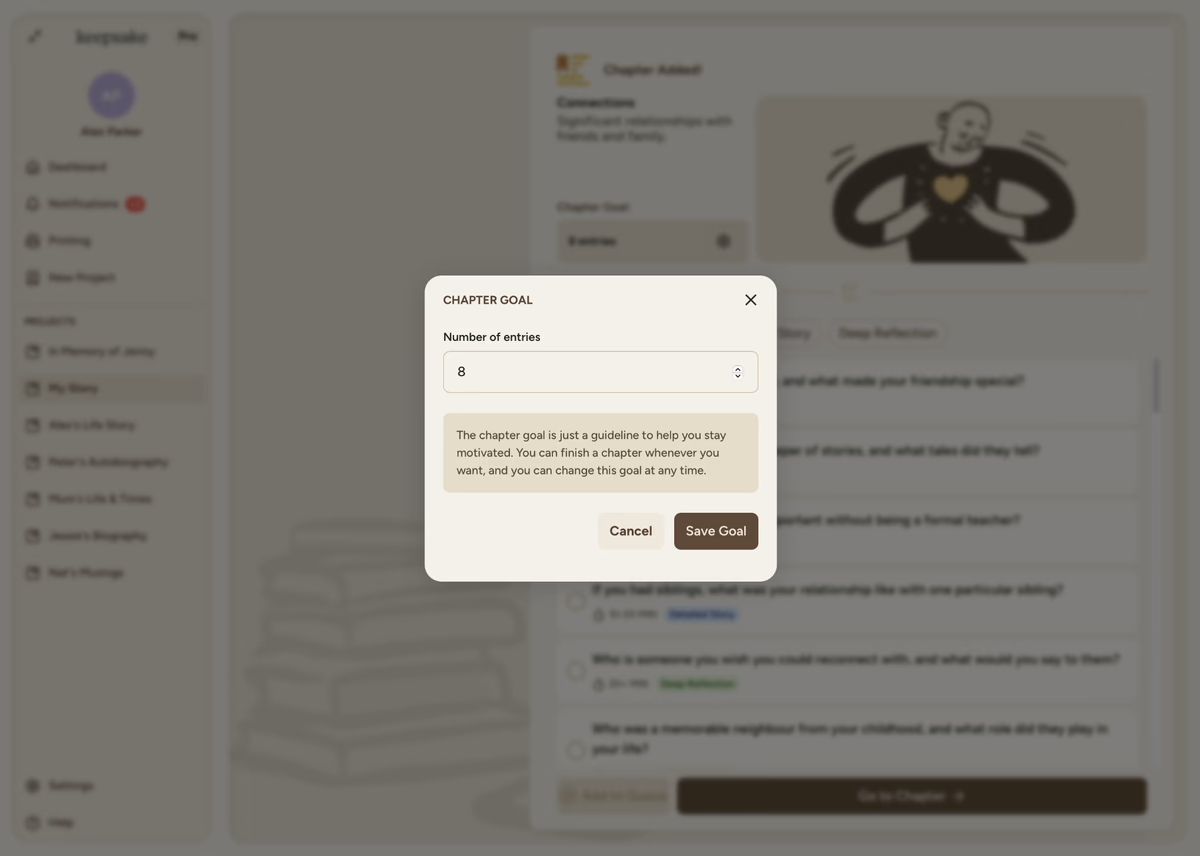
Go to Chapter
When finished, you can go to the chapter page and browse the question library
Available Chapter Templates
Keepsake offers a variety of different chapters that change depending on your project type. Here are some examples of what you can choose from in our Biography projects.
Chronological Journey
The Big Picture
Foundation of a life story. Overview questions that capture who this person was to the world.
Formative Years
Early experiences that shaped identity and worldview during childhood.
Their World & Times
The historical era, cultural context, and times that shaped a life.
Education Journey
Academic milestones and the pursuit of knowledge throughout life.
Work & Accomplishments
Professional contributions, career achievements, and lasting impact.
How to Set Goals
You can set chapter goals anytime by heading to the chapter settings and selecting Chapter Goals. For more information please visit the Chapter Goals page
Chapter Goals
Learn how to set motivating chapter goals, track your progress, and adjust targets to keep your momentum
Understanding Chapter Structure
Queue vs Entries
Queue
Questions you've added to be answered
Entries
Written stories in this chapter
Question Types
Each chapter contains three different types of questions that help you decide what to answer. For a comprehensive Keepsake, we recommend having a mix of all three.
Quick
Short answer, focused responses
5-10mins
Detailed Story
Fuller narratives with more depth
10-20mins
Deep Reflection
Thoughtful, comprehensive stories
20+ mins
Chapter Selection Strategy
Recommended First Chapters
The Big Picture
Sets foundation with a wide variety of overview questions
Formative Years
Provides structure and background from younger years
Connections
All about the most important people in your life
Start with 2-3 chapters that excite you most, you can always add more later.
Best Practices for Organising Chapters
Start Small
Begin with 2-3 chapters. Add more as themes emerge naturally from your writing.
Mix Chapter Types
Balance chronological chapters with thematic ones for varied perspectives.
Adjust Goals Realistically
Set achievable targets. 5-10 entries per chapter is often plenty.
Work Non-Linearly
Jump between chapters as memories surface. No need for chronological order.
Common Questions
Most projects work well with 5-10 chapters. Quality matters more than quantity, its better to have fewer well-developed chapters than many sparse ones.
Yes, but entries within it will be lost. Consider moving entries to other chapters first if you want to keep the content.
Yes, you can rename a chapter at any time within the chapter settings.
No! Work on whatever inspires you. Many users jump between chapters as memories surface.
Chapter Success Tips
If you need more assistance with this topic please contact support at support@keepsakeproject.co.
Was this helpful?
Need more help? Contact our support team